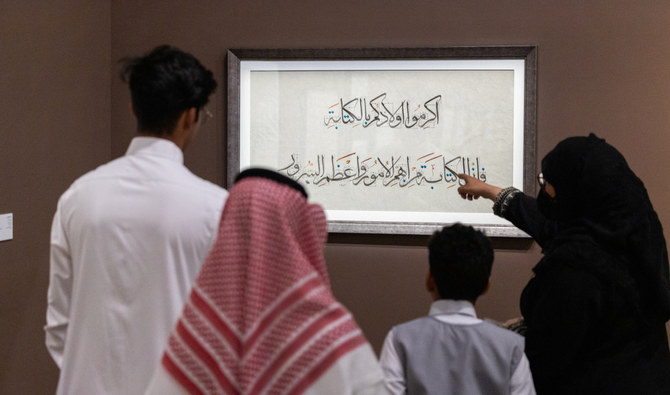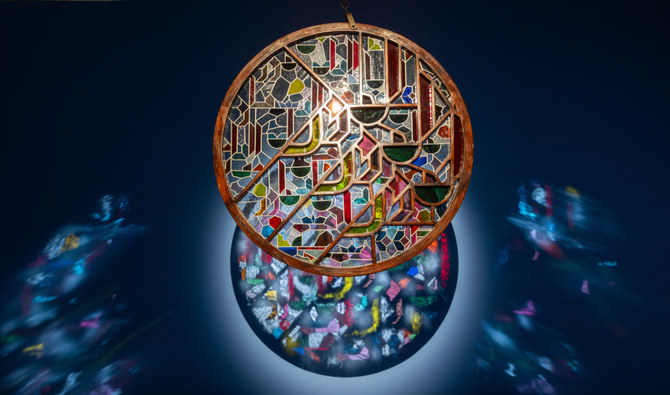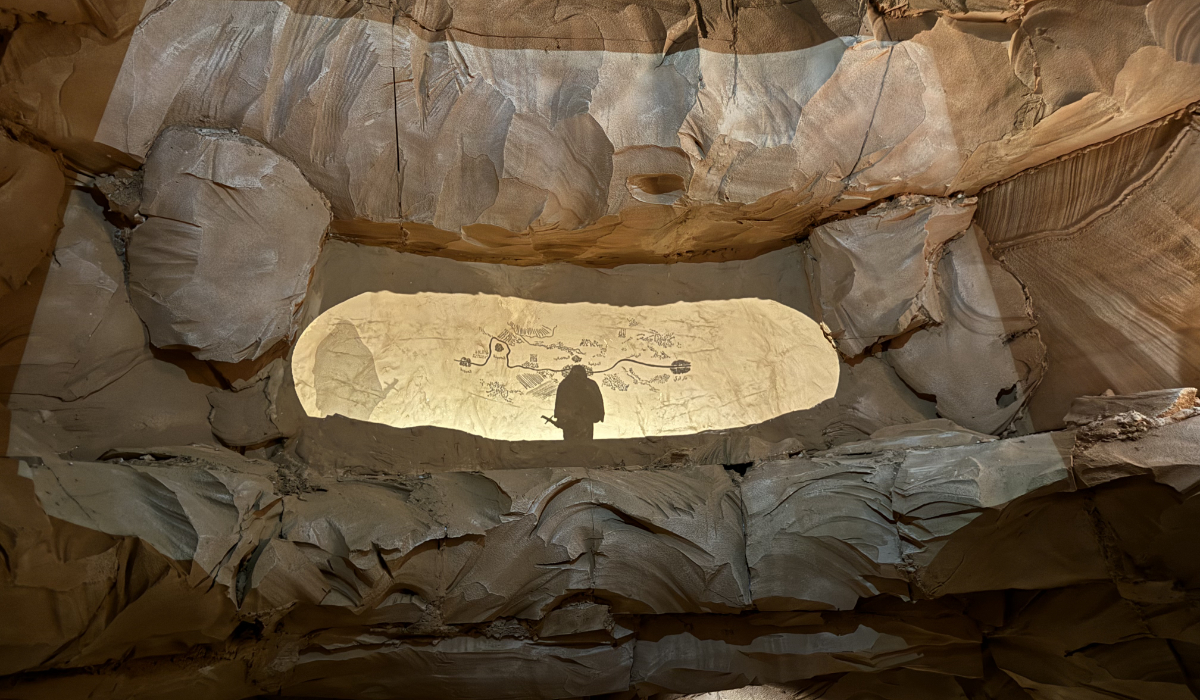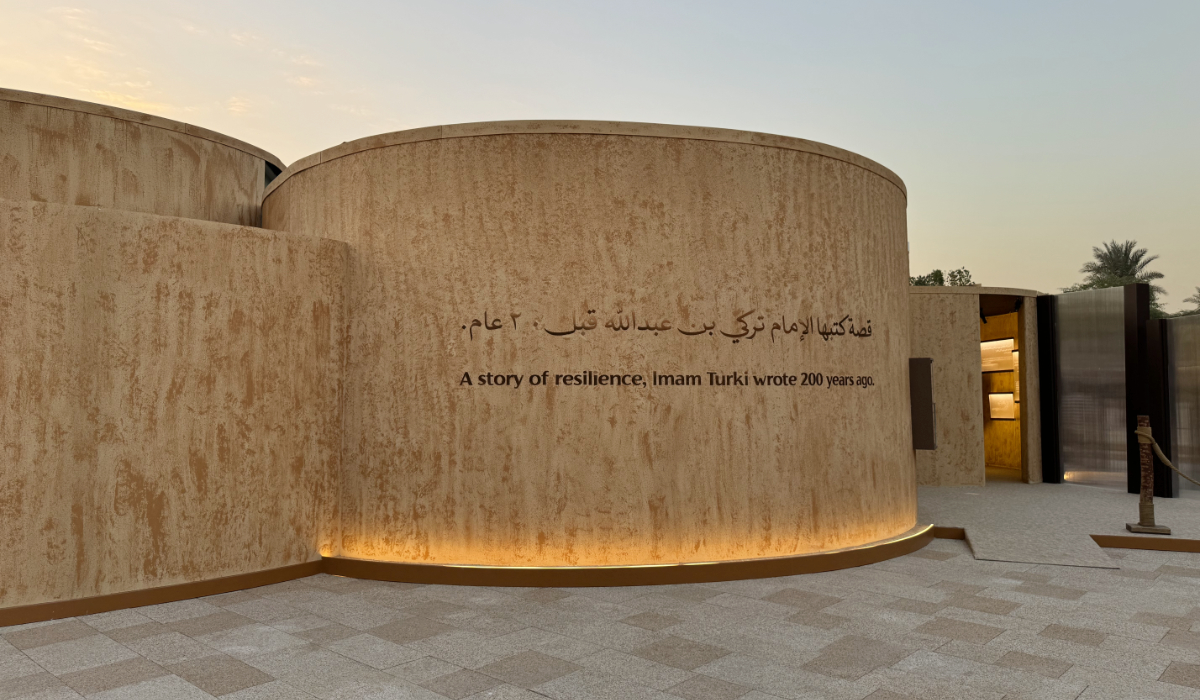RIYADH: The “Scripts and Calligraphy: Paths to the Soul” exhibition being held at the Madinah Arts Center in the holy city is highlighting the spiritual dimensions of the art form through historical and contemporary works.
Organized by the Ministry of Culture under the patronage of Madinah Gov. Prince Faisal bin Salman, the Oct. 15 to Dec. 23 exhibition details the history of Arabic calligraphy through the ages, highlighting its aesthetic and functional dimensions as an art form and a symbol of identity and heritage.
Madinah’s hosting of the exhibition is important due to the city’s spiritual importance in Islamic civilization and history.
The exhibition gives visitors the opportunity to embark on an immersive emotional journey of discovery, realizing the value of Arabic calligraphy as a cultural treasure and a manifestation of the Kingdom’s heritage.
It also aims to highlight the importance of Arabic calligraphy as an essential element in Arab identity.
Randa Fahmy, founder and chief fesigner of Egypt’s Randa Fahmy Design Associates, who is taking part in the event as a specialist, told Arab News: “The success of the exhibition is a direct result of the incredibly passionate and creative team effort from the MoC, from traveling across continents and individually meeting artists to perfectly curating such a varied selection of items across so many mediums and cultures.
“It was my honor to create a custom piece inspired by a traditional Omani pen case, symbolizing the power of calligraphy across time — a matter that is paid homage throughout the exhibition.
“This was further extended by the Ministry of Culture through facilitating a series of panels with distinguished scholars and exhibitors — creating lasting connections and opportunities to further develop and collaborate on such an important subject,” she added.
The exhibition, first launched in 2021, is one of the main events implemented by the Ministry of Culture to celebrate Arabic calligraphy as one of the initiatives of the Year of Arabic Calligraphy (2020-2021).
Saudi Arabia also led a successful collaboration with 15 Arab countries to include Arabic calligraphy on UNESCO’s list of Intangible Cultural Heritage in 2022, consolidating its status as a global symbol of Arab culture.
The ministry commissioned a group of senior calligraphers, artists and designers to produce a group of classical and contemporary artworks for the exhibition, which includes Islamic artworks, as well as rare manuscripts from the ministry’s collections, private collections and a number of works on loan from the Museum of the Arab World Institute in Paris.
Abdelrahman El-Shahed, a participant at the exhibition, told Arab News: “I was very pleased to participate with a group of multidisciplinary artists in this important exhibition that tells the story of the interaction and integration of Arabic calligraphy with other arts and crafts.”
Another participant, Nabil Boukhari, told Arab News: “The exhibition brings together the history of ancient calligraphy with its progress and development over the ages up to today.
“The presence of an elite group of specialists in this art exhibition increased the pleasure of gathering at this significant event.”
Acclaimed architects and scenographers Jean-Paul Boulanger, Margo Renisio and Tang Tu designed the exhibition, while 34 calligraphers from 11 countries, as well as 19 artists from 12 countries, are taking part under four complementary themes: Light, Letter, Space and Poetry.
The themes embody universal spiritual values that frame the works on display and spark potent and thought-provoking dialogue.
The event opens daily from 11 a.m to 11 p.m, except on Sundays, and from 2 p.m to 11 p.m on Fridays.
Those wishing to attend can obtain free entry tickets via the link:
https://www.ticketmx.com/ar/d/4164/scripts-and-calligraphy-paths-to-the-....
In 2021, the ministey held the first edition of the exhibition at the National Museum in Riyadh under the theme “Scripts and Calligraphy: A Timeless Journey.”




































